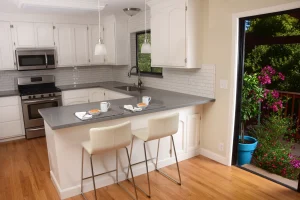Moving Tips: How to Pack Your Kitchen for the Move

Moving house is like cleaning. Some things have to be let go, but some things can be packed in order to make your next month better. Let’s talk about how to pack your kitchen when you move – whether it’s moving from your parents’ house to your first apartment, from your raising family’s home to your retirement cottage, or anything in between place. Experiencing your new home can be exciting no matter what stage of life you’re in, and organizing your kitchen is an art you can learn to perfect.
Replica of Samsung’s move-in kitchen
get old!
Like spring cleaning, moving is a great time to dispose of old items. If you’re looking to upgrade or replace something in your kitchen, why not do it while you’re moving? That way you can leave old stuff behind, sell second-hand, or donate to your local charity shop. You can then start with the updated version in your new place – no packaging or packaging necessary.
Items that may need to be replaced during the move include magnetic knife bars, shelves and cutlery trays. These are usually purchased to fit a specific space. Find out ahead of time if your new kitchen needs a different organizational setup so you’re not left to move things you can’t use.
Moving house is also a great time to upgrade your small appliances into a cohesive collection. Moving from your bachelor pad to your first detached home? Maybe it’s time to swap out your two-slice toaster for a four-slice toaster. Check out small kitchen appliances from brands like KitchenAid and Breville to see where you want to save money and where to splurge.
How do I organize my kitchen without letting things break?
Unfortunately, there is no way to guarantee that no damage will occur during the moving process. However, there are plenty of ways to minimize kitchen breakage and back fatigue.
Divide your kitchen into sections so everything from one box fits in the same area of your new kitchen. Then, work your way into mixing light and heavy objects. Stack pots and pans on the bottom of the box, making sure to use soft material between each nonstick pan. Kitchen towels are great options – they have to be packed, and they’ll protect your more delicate surfaces. Then, when the box reaches 70 percent of the weight you can easily lift, fill the rest of the box with lighter items. These might include pantry items like cookies, tea, or extra tissues.
If you don’t have kitchen towels or dishcloths to wrap your boxes with, use other household linens like pillowcases and washcloths. When those run out, old newspapers, flyers, or even Styrofoam boards or plates from the dollar store will do.
You can never have too many boxes or too much packing tape when you go through the packing process. Make sure each box is filled with lightweight, impact-resistant packing material. Then, wrap everything tightly with packing tape or stretch wrap. More tags too!
assistant
How to Pack Kitchen Utensils
Major appliances like refrigerators and stoves should be measured ahead of time and then moved by professional movers. These items are fragile and heavy, and some of their components (such as refrigerator coolant) can be dangerous if exposed to the air. I wrote a guide for Best Buy on how to move major appliances, and it’s worth a look if you plan on taking it with you. You first make sure you can get them out of the hotel, then make sure they’re packed securely before they go anywhere. (Be sure to take out shelves and such before packing any appliances!)
Small appliances are packed with their weight in mind. If you still have the original packaging, great: it’s the safest way to move any small appliance. If not, pack heavier or more delicate appliances into a sturdy box with large bath towels in every crevice. This method works very well for moving items like kitchen blenders and espresso makers, but it’s usually not needed for heartier items like microwaves and toasters because they have few moving external parts.
How to Pack Your Kitchen Moving Copy
When you clean up your kitchen, what do you put first?
The kitchen is well packaged with a “last in, first out” mentality. Anything you need right away may be something you don’t need until the last minute. This can be helpful when deciding what to pack first and last. Pack occasional utensils and appliances first, then things like refrigerated foods.







